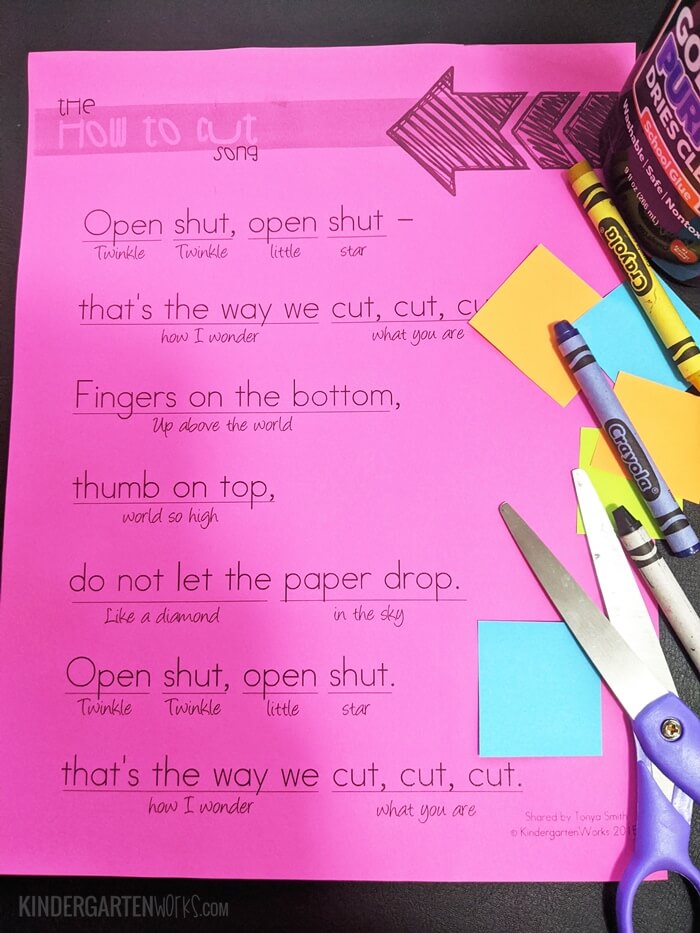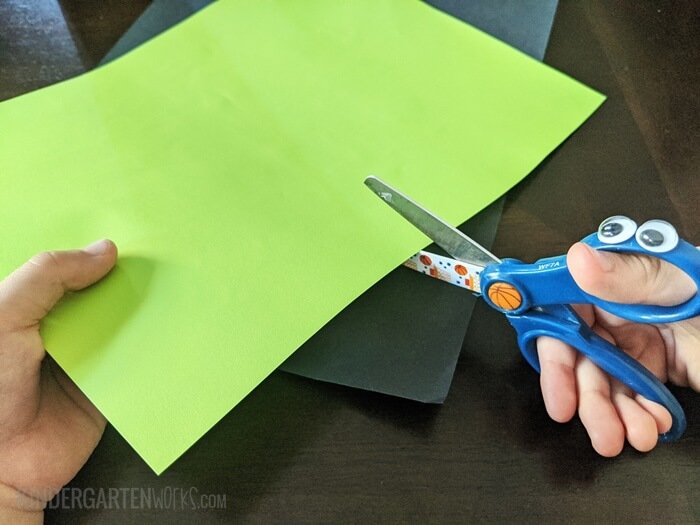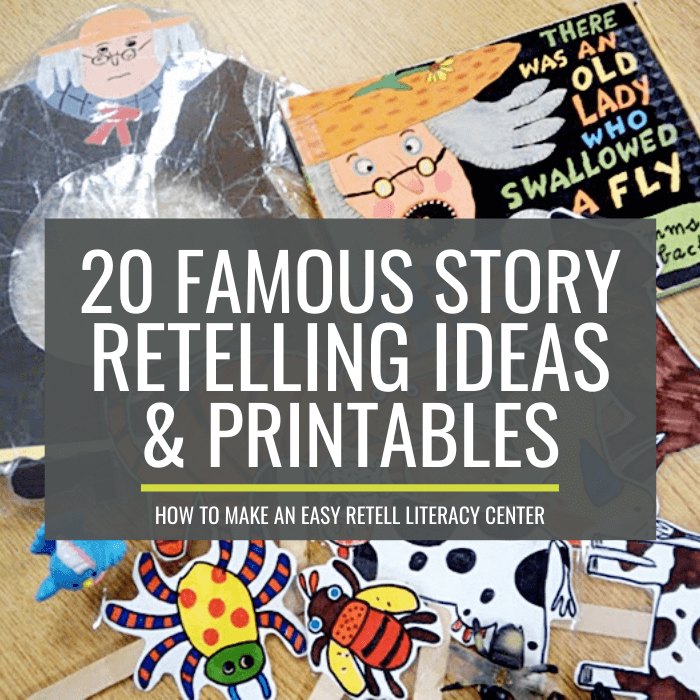Teach How to Cut: The Lowdown on Scissors
Teaching kindergartners how to cut – quick resources for teachers. Here are some bright ideas to teach how to cut for the students that need it in your classroom – be it with just a few students or as a whole group lesson.
Along with teaching basics, often we need to teach students how to cut at the beginning of the school year.

I highly recommend teaching how to use scissors and how to cut just as we teach other simple things like restroom procedures!
It’s a kindergarten teacher’s secret wish {or maybe just mine} that they all knew how to hold a book upright, hold a pencil correctly and hold scissors when they came – but yet that’s part of what we do.
We take kids where they are and move forward… one beautiful facet of how life works in kindergarten.
So here is a song, some tips on how to break down teaching how to use scissors and a first scissors activity to use at the beginning of the year.
Teach the ‘how to cut’ song
This little gem came from Tonya on facebook! She shared it after a fellow teacher shared it with her and I think you’ll love it!
Teaching with songs is key to keeping kinders engaged and helping them remember later on.
This “how to cut song” is sung to the tune of Twinkle Twinkle Little Star.
It goes a little like this… Open shut, open shut, that’s the way we cut, cut, cut. Fingers on the bottom, thumb on top, do not let the paper drop. Open shut, open shut. That’s the way we cut, cut, cut.
– Tonya Smith
I know how it can be tricky to figure out how a song is supposed to sound when you’re putting new words to a familiar tune.
I wrote this out teacher style. I put the original words underneath just like a running record.

Download the printable words for the how to cut song. [terms of use] [downloading help]
Yes, I’m totally guilty of making this “teacher-fied” but I hope you love having this tool at the ready!
How to teach how to cut
In order to explicitly teach how to cut, kinders need to understand how to hold scissors, proper finger placement and how each of their two hands have a specific job when cutting.
Here is a video that you could potentially show to students or use a guide for yourself to use in mini-lessons.
The main points in teaching how to cut:
- scissors point away from the body
- thumb goes on top (thumbs up!)
- supporting fingers go on the bottom
- the scissor-holding hand doesn’t really turn (or steer)
- paper-holding hand turns and steers the paper
- move the paper-holding hand as you cut to sturdy paper
I liked to teach that cutting is a pattern – you 1) open 2) slide 3) shut. I would verbalize, “open, slide, shut” to match exactly what my hands were doing while modeling a project.
Find a way to isolate what your students need to learn the most and fit in a mini-lesson while you’re still establishing procedures and routines and need little activities to break up the first few days of school.

You can always add a pair of googly eyes to scissors to help to show which way is “thumbs up.” Even if they don’t last very long, it can help for a mini-lesson on finding the thumb hole and keeping your thumbs up.
Another alternative idea is to add washi tape to the thumb hole (where you’d put the googly eyes) and keep that at the top while cutting.
Scissors salad – learning to cut activity
There are some different types of cuts that students can learn in order to master their scissor skills. Learning how to cut along a line, make little quick snips, and cut in a tight space are three examples.
This project idea is a starting place and it came from Laura on facebook.
It’s called “scissors salad.”

You’ll need green, orange and yellow construction paper. You can break this activity over multiple days to build up fine-motor strength and help keep focus.
- Tear green paper into lettuce pieces. (Light green paper looks more realistic)
- Cut “snips” from a long orange rectangle paper. Make baby carrots if they cut on a diagonal or make carrot sticks if they cut rectangle snips.
- Cut yellow paper. Make cheese “cubes” or shredded cheese.
- Optional: Cut “fringe” on a colorful piece of paper to make a fancy hula napkin.
- Optional: Use the salad pieces to create name artwork.
This fun scissors salad recipe was also shared by Mrs. Payton and she has a free cutting on the lines printable for you too.
Let’s wrap it up
Whether you need to teach scissors skills to your entire class or with just a few, I hope you find these helpful.
Just remember: teaching how to cut will soon become a faded memory come the winter and spring months. They will get there!
If you like what I do here on KindergartenWorks, then be sure to subscribe today. I look forward to sharing ideas with you weekly.







The advertising cards found in magazines are great for practice cutting. They are a good size for little hands and stiff enough to be easy to cut.
I always start with cutting play-doh. The kids love to flatten it into a pancake and then cut. It is easy to hold a small piece and cut. It builds fine motor strength. Then I progress to cardboard and after that cardstock. Paper comes last because it is the hardest to cut.
This couldn’t come at a more perfect time! One of our new kiddies in our Montessori classroom is obsessed with scissors. He was cutting strips and pieces for over an hour on Friday, but keeps holding the scissors funny. Thank you!
You’re welcome – I’m so glad to hear that this will be helpful! Have a great year!
– Leslie